During a raucous and packed public meeting on Tuesday night, developer Avery Hall Investments laid out their plans for a seven-story apartment building with retail and a grocery store, which will replace a Key Food at 120 Fifth Avenue in Park Slope.
The development will split 165 apartments between two buildings, rising four and six stories, on a site between Baltic Street and Sterling Place. The 196,000-square-foot building will have 139,000 square feet of residential space and 52,000 square feet for retail. A quarter of the apartments, or 41 units, will rent for below-market rates.
Twenty percent will go to families making 60 percent of the Area Median Income, or $46,620 for a three-person household. Another 2.5 percent will rent to families earning 80 percent AMI, or $62,160 for three people, and a final 2.5 percent will be set aside for families earning 100 percent AMI, or $77,700 for a family of three.
There will also be a 186-car underground garage, which is more parking than the Key Food’s 100-space lot. Since the developer chose to include a large amount of retail, that boosted the parking requirements significantly. SLCE will design the new buildings.
Neighbors were upset that the grocery store in the new building would only be 7,500 square feet – a big downgrade from the 36,000-square-foot Key Food store that has occupied the lot for 30 years. When Brian Ezra, a partner at Avery Hall, announced the size of the new grocery, the crowd of 400 Park Slope residents hissed and tutted. He tried to soften the blow by explaining that he had grown up in the Slope, but locals weren’t having any of it.
“I can’t accept anything less than the replacement of square footage than we have now,” declared neighbor William Frazier. “Anything less than that would be an insult.”
One by one, longtime residents stood up and explained how hard they’d fought to get the Key Food to come to the neighborhood when Park Slope was still considered a marginal area. Older folks said the wide aisles, organic produce and relatively affordable prices made it particularly attractive for seniors and those who rely on wheelchairs. The crowd demanded that the new store rival the Key Food in size and offer food for similar prices. One or two speakers even said they’d support a slightly taller building if it would mean a larger grocery store.
“I’m willing to sign a petition to give you a variance, to go a little higher, but we also need a supermarket, and it needs to be big enough to sustain the population in this community,” remarked Ahalia Smith, who said she’d lived in the area for 40 years.
Council Member Brad Lander, Public Advocate Letitia James, and Borough President Eric Adams all showed up to speak in support of a bigger supermarket. James said she shopped at the Key Food as a little girl, and even traveled there to buy groceries when she lived in Fort Greene and Clinton Hill.
But a larger grocery store simply wouldn’t generate enough revenue for the project to work financially, Ezra claimed during the presentation.
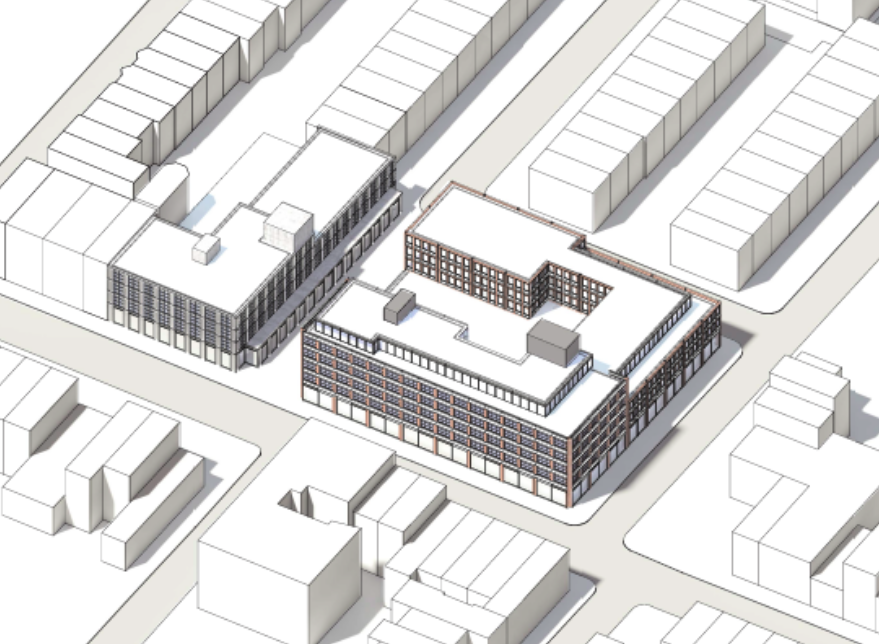
Massing diagram of 120 Fifth Avenue via Avery Hall Investments
And the site has a few unusual quirks. First there’s a swath of land that the Department of Environmental Protection has earmarked as open space. That will be turned into a “public piazza” lined with shaded tables and chairs. And the project will open up Butler Street between Gregory Place and Fifth Avenue, which was de-mapped when the Key Food was built in the early ’80s.
The neighborhood’s R6A zoning caps the heights for new buildings at 70 feet, but an urban renewal plan crafted in 1982 actually limits new construction to 40 feet. It also requires affordable housing on the site. The plan will expire in 2021, but until then, anything built along this stretch of Baltic requires approvals from city agencies and the community board.
And the developer wants to amend the urban renewal plan so they can build up to 60 feet, which is allowed in the underlying zoning. The Department of Housing Preservation and Development and the Department of City Planning will have to approve those changes and Avery Hall’s plan before they can start construction.
They expect to break ground in 2017, and work will last for roughly two years.
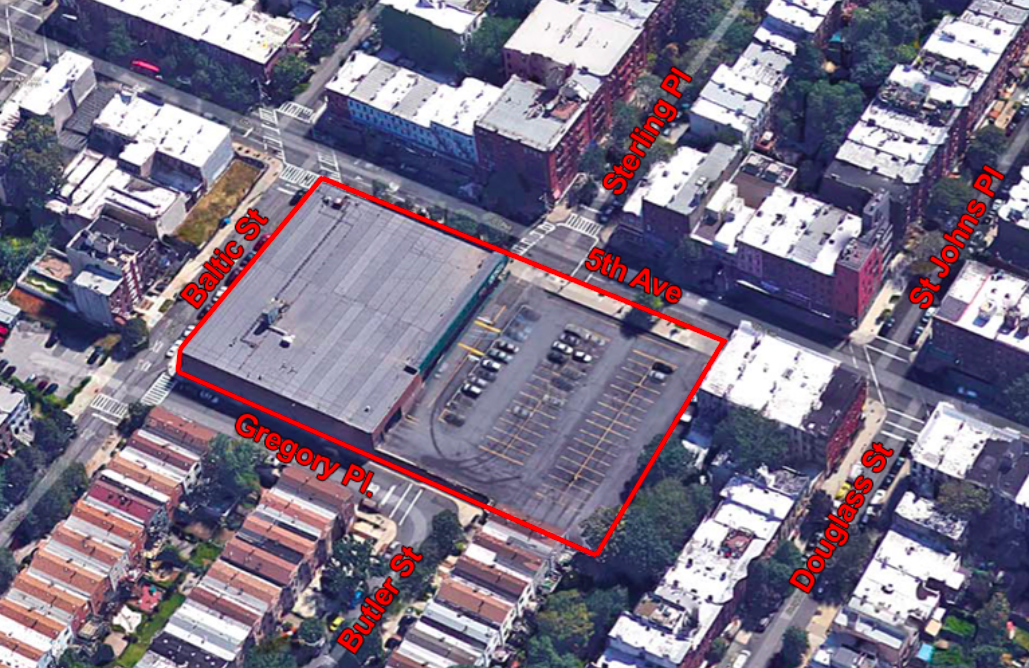
Aerial view of 120 Fifth Avenue via Avery Hall Investments
Subscribe to the YIMBY newsletter for weekly updates on New York’s top projects
Subscribe to YIMBY’s daily e-mail
Follow YIMBYgram for real-time photo updates
Like YIMBY on Facebook
Follow YIMBY’s Twitter for the latest in YIMBYnews

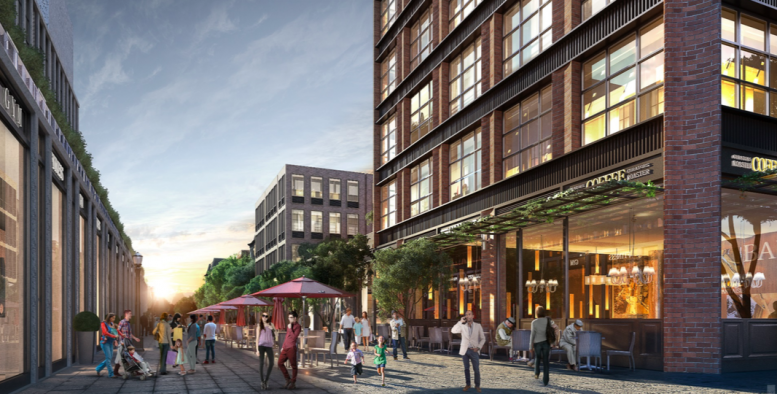

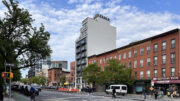
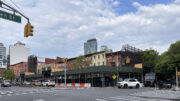

These developers cite the new boutique type retail as plus and necessary for the economic success of the project. They will simply just be adding to the vacancies in the area, this time in a strip mall mode. The supermarket as a magnet would give them a commitment for 2/3 of their space and would enhance the prospects for any businesses choosing to the lease other spaces. Without a complete replacement for the supermarket this project should not be approved and would not be economically viable.
The proposal complies with the current zoning. The developers do not need store approval. The operators of the Key Food are remaining involved in the project so it only seems logical that they believe a small store is sufficient.
*community approval.
Mr. Gordon, this is not anything like a strip mall. I agree a larger supermarket should be included in the plan, but the developer will need a significant height bump to make the work pencil out. Including more residential and potentially high-end commercial space (office) would help to subsidize the ground-floor supermarket. Eliminating any parking requirement would also help the financials. The City needs to get creative to support a supermarket instead of putting restrictions on the developer.
At 186 spaces, the parking requirement here is killing the opportunity to include a large format supermarket. If the city eliminates the parking requirement, a supermarket might be possible. Why is the city in the business of requiring parking?
“but an urban renewal plan crafted in 1982 actually limits new construction to 40 feet.” That seems insane. Nothing says vitality like shorter buildings!
Jared, parking requirements are commonly part of zoning on the premise that, when you are building something that will increase the number of cars, you need to provide some parking. Whether the city should revise these requirements is an issue of some debate.
With respect to the supermarket size, supermarkets are generally low margin businesses that cannot afford the same rent as banks or chain drug stores. It would benefit the city to change the zoning resolution to include food stores in the definition of “community facilities,” which currently include for-profit medical offices and day care facilities regardless of whether the community lacks them or has many. “Community facility” space in a development is not subject to the Floor Area Ratio (FAR) in a projects. For many sites, it amounts to free space that the developer can rent out without using up the limited floor area available for apartments and other commercial units. I don’t know if that would help on this project given the Urban Renewal plan, but, in many areas, zoning’s height restrictions allow a larger building than the FAR, and community facilities allow developers to build larger buildings.
Just to correct a small error here – community facilities are in fact included in FAR. But they are in a separate category from residential floor area, so they often function like a “zoning bonus” on top of the residential portion of a project, particularly in permissive zoning districts without height limits (R6, R7, R8). And in this particular case, I’m not sure it would help the developer much because R6A/R6B has a strict height limit that prevents them from building beyond 70 feet.
They idea that you can’t build new retail in the one of the densest neighborhoods in America without adding parking is in-effing-sane. Hell in a hand basket.